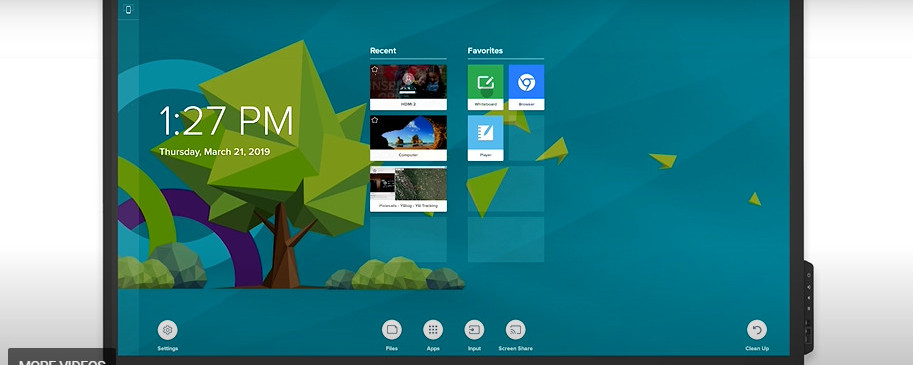Work and Play in Vietnam
I have lived in Vietnam teaching for over 15 years and I have found this country and its people to be enthralling, captivating, frustrating, and challenging. But I have never found it to be boring. Whether you come here for a holiday or to teach, or a mixture of both, I can promise that you will have adventures that will stay with you for the rest of your life.
From the simplicity of sitting on plastic chairs on a footpath, surrounded by Vietnamese workers on their way home from work and slurping down bowls of soup. To the experience of cruising on a 5-star “Junk” taking in the scenery of the awe-inspiring karst seascape of Halong bay. Your senses will be on overload.
It is appreciated by the locals if before your visit you have made some attempt to understand a little about the people, their culture and country. This will give you a quick overview and feel of the country before you arrive.
The Hue Citadel.
A Brief History of Vietnam.
Viet Nam is located in a region considered the cradle of mankind. An early agricultural center practicing rice farming, where stone and metallurgical inventions began
The Vietnamese people had to cope with various foreign aggressors. During 12 centuries through to the 3rd century B.C until the late 20th century, the Vietnamese had to cope with multiple struggles against foreign aggression.
From war with China over trade and land to the French trying to dominate with missionaries and trade and on to Japan after WW11 who were used to “police” Vietnam, all the way through to the Vietnamese American war.
Vietnam has been forged in the flames of battle. And like the bamboo they sway and bend but ultimately come back stronger than before. Even with such a violent background, The Vietnamese have remained a proud and gracious people.
Custom, Culture, and Etiquette.
The family is the glue that holds Vietnam together. It is not uncommon to find 3 or 4 generations all living under one roof. Many families strive for a large number of children and grandchildren under the belief that “more children equals more fortune.” Confucianism and the feudal notion of masculine domination have an influence on them. In the household, men play the most significant roles and are always in charge.
In the household, men play the most significant roles and are always in charge. he “three obediences and four virtues” of feudal ethics—obedience to one’s father during childhood, one’s husband during marriage, and one’s sons during widowhood—shape women. The four virtues are diligence, good manners, proper speech, and morality.
However, the traditionally male-dominated viewpoints have greatly weakened, and equality is now the norm (at least in urban areas).
there are things that are unique to Vietnam that are polite and impolite, it is well worth the time and possible embarrassment saved to take a few minutes and read my post on “Etiquette in Vietnam” It is only a 4-minute read and may save you a lot more than just embarrassment.
Weather and Climate and Best Times to Visit.
Covid has certainly put a dent in the tourism industry worldwide and Vietnam has suffered from a lack of tourists just like most other countries. The only good thing to come out of this is the quietness of so many normally busy tourist spots.
Unlike many people, the rain does not bother me. This is just as well in Vietnam as you can go from a sunny day to a torrential downpour in minutes. There is nothing like seeing hundreds of motorcycles scuttling to the side of the road so the driver and passengers can don ponchos and raincoats. When it rains in Vietnam it can be like driving in a bucket of water. And much of Vietnam is barely above the water level so expect to get flooded.
I can still remember the first time I was caught in a downpour on my motorcycle. The water was halfway up the wheels and driving was impossible. And having a snake swim past me was the icing on the cake.
So if you aren’t fond of rain here is a rain and weather chart for Vietnam so you can plan your holiday accordingly.
The chart is in Fahrenheit and inches
The chart is in Fahrenheit and inches.
Top 11 Cities in Vietnam by Population.
The 66th-largest nation in the world is Vietnam. And this nation is the 15th most populated in the globe with a population of about 94 million. Vietnam only has six cities with a population of more than 1,000,000 people which surprises a lot of people considering the total population.
With a population of more than 8.6 million, Ho Chi Minh City is the biggest city in the nation. And Hanoi is the second-largest city with over 4.7 million people but is still well behind Ho Chi Minh City in terms of size. Statistics from: Statistic Times.
The nation contains 32 cities with at least 100,000 citizens and an additional 51 cities with populations between 10,000 and 100,00. With the rest of the population living in rural areas.
Not all the cities, in my opinion, are worth visiting. But some are definitely worthwhile investigating. Starting with the top 11 cities by population, I am going to separate the corn from the chaff. There are also many sites that are not cities that we will look at over the coming weeks. So buckle up, lets start with some of my favorites.

From this list we are going to look at 3 cities. Hanoi, Ho Chi Minh City and Vung Tau.
Hanoi.
The attractive capital of Vietnam, Hanoi, has aged well, maintaining the Old Quarter, monuments, and colonial architecture while creating places for new construction. Although the city has dropped many of its previous names, including Thang Long, or “ascending dragon,”
it hasn’t lost its history, as seen in places like Ho Chi Minh’s Mausoleum and Hoa Lo Prison. More than 600 temples and pagodas, as well as lakes, parks, and shady boulevards, add to the charm of this city, which may be conveniently toured by cab.
Things to do.
From a $10.00 walking tour to an upscale visit of Halong Bay there are many sights to see in Hanoi. The walking tour takes about 3 hours and covers Hanoi’s lively Old Quarter of nearly 40 streets packed with shops selling all kinds of goods, each street named for its primary good or service.
You can take public or private transport to Halong Bay from Hanoi, and it is well worth the time. Tours on the Junks are usually for 2 to 3 nights and are around the $200 mark. There are around 1,600 islands and islets that makeup Ha Long Bay in the Gulf of Tonkin, creating an amazing panorama of limestone pillars.
Most of the islands are abandoned and undisturbed by human habitation due to their precipitous nature and are surrounded by emerald waters and thousands of tall limestone islands covered in rainforests. Visitors can travel on junk boat tours and enjoy sea kayak excursions. Scuba diving, rock climbing, and hiking are popular activities in the area, especially in the hilly Cát Bà National Park.
Ho Chi Minh City.
My home, on and off for the last 15 years, is a bustling metropolis that never sleeps. Ho Chi Minh City, the main hub of the southern region, is teeming with activity, innovation, and transportation. It is also the economic center of Vietnam. The dynamic cityscape of HCMC unites the old and new Vietnam in the smallest of areas, symbolizing both the past and the future of the city.
The Reunification Palace, Notre Dame Cathedral, Saigon Central Post Office, and Bitexco Financial Tower are some of the city’s most well-known tourist attractions, making District 1 in Ho Chi Minh City undoubtedly the most populated district. Hotels, restaurants, cafes, and bars abound in this region as well.
Things to do.
Discover the Saigon Opera House, the Central Post Office, and the Notre Dame Cathedral by strolling down Dong Khoi street. Local attractions include the Jade Emperor Pagoda and Benh Thành Market.
Take the locals’ advice and climb onto the back of a motorcycle to explore the city from the ground up and experience its vibrant pulse. You can take motorbike trips at dusk and travel around the city when the nightlife starts to buzz. Evening is also a time when the street vendors open their stalls and you can buy anything from Levi jeans to steaming bowls and plates of food.
Locals in Ho Chi Minh City enjoy congregating around kiddie-sized plastic tables and dented metal tables for fantastic roadside feasts. Highlights include bánh mi, savory pancakes made in the tradition of the South (bánh xèo), and broken rice.
Or if the mood hits you, you can take a boat to Vung Tau which is a coastal city that is close to HCMC. It has a couple of beautiful beaches and some great seafood. However, on long weekends it is packed out with residents from HCMC escaping the heat and noise of our bustling city.
Vung Tau.

Vung Tau is the perfect weekend escape from HCMC and is even better if you can get there through the quieter weekdays. Prices to get there are cheap and accommodation ranges for all budgets. You can get there by bus with prices ranging from $7.00 to $15.00 for luxury minivans with WiFi or you can catch a high-speed ferry that will whisk you there in less than 2 hours. The cost for this express service is around the $18.00 US mark. Catching the bus will take around 3-4 hours depending on stops and traffic.
Vũng Tàu is a port city and is situated on a peninsula in southern Vietnam to the east of HCMC. It was once a French colonial settlement but is now a well-known beach destination with hydrofoil transportation bringing many people from Ho Chi Minh City. With the lush Small Mountain and Big Mountain serving as a backdrop, it features a long, crowded stretch of sandy shoreline that includes Front Beach and Pineapple Beach. It is simple to navigate, and it takes only 15-20 minutes to walk from the front beach to the back beach. There are several restaurants, offering both a wide variety of regional seafood and a fair selection of western cuisine.
Things to do.
The name of the game is relaxation. Soak up the sun and fill up on the food. for those more adventurous spirits, there are a whole range of day trips and also kayak and canoe tours. Additionally, you may take a day trip to some of the most stunning beaches in southern Vietnam, stopping along the way to see a local dragon fruit farm and nature reserve. While there, you can enjoy the tranquil surroundings and a fantastic Vietnamese meal with a local family.
Vung Tau is best known for its nightlife. And there is a good selection of clubs and bars that cater to all. After a day of relaxation and eating you can let your hair down in the myriad of bars that are open through the night at Vung Tau. Clubs range from the loud to the lewd. With perennial favorites like Matildas, Vung Tau beach club, Peace and Love, The black pearl bar, vitamin C2 Beer club and so many more.
Vung Tau is a party town and the daytime is recovery time. A lot of the older ex-pats end up retiring here for the laid-back lifestyle and cheap living.
Final Thoughts.
This is an introduction to what sights and experiences you can have in Vietnam. More in-depth blogs have been written and will be continued to be updated under this section of my website.
Whether you are an ESL teacher looking to get away for a holiday or a tourist on a limited time and or budget, this should help you. I will expand over the coming weeks as to what I see as the best places to visit during your time in Vietnam.
A bit of knowledge goes a long way in making your trips a lot more enjoyable. If you have any questions, I am happy to provide answers to make things easier.
Stephen.
Any or all links on this site may be affiliate links, and if you purchase something through those links I will make a small commission on them.
There will be no extra cost to you and at times due to my affiliation, you could actually save money.
You can read our full affiliate disclosure here.



















































